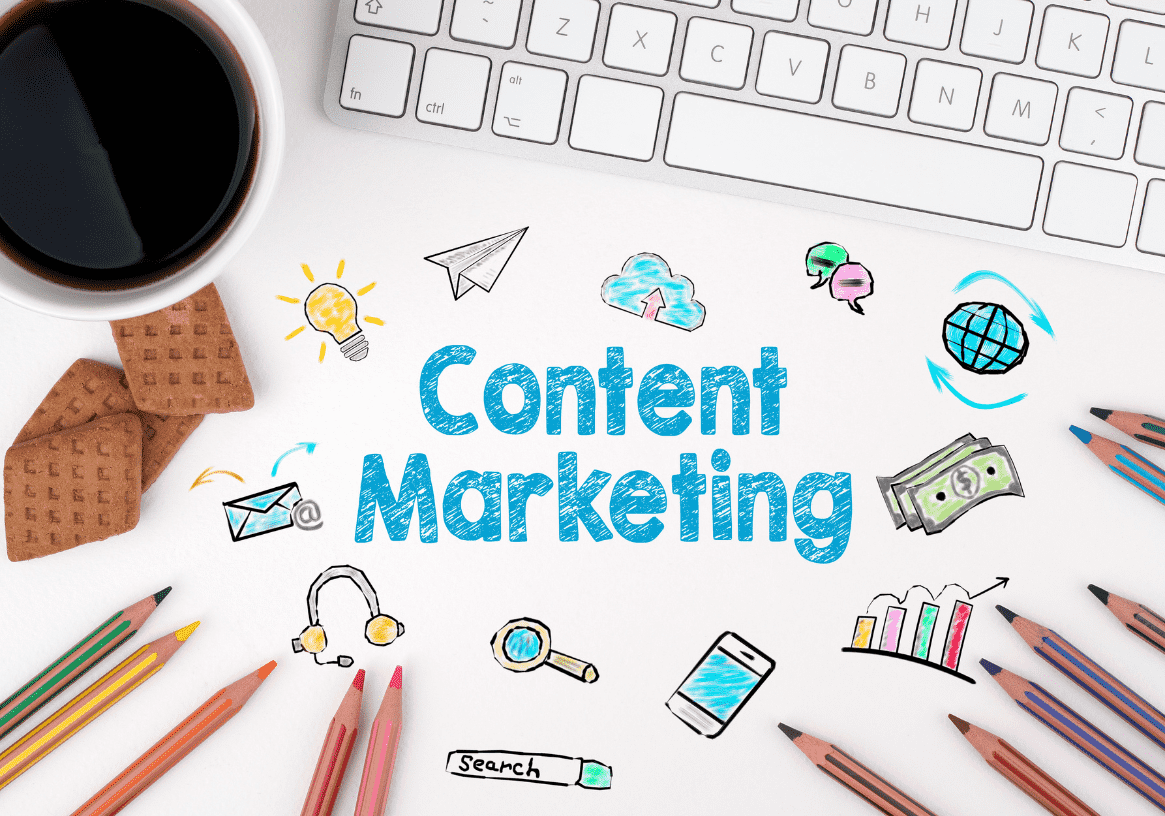From the inception of your business, growth should be at the forefront of your mind. After all, growth equates to revenue, competitiveness, and funding. As you navigate the landscape of SaaS marketing, you’ll soon realize that there are endless ways to grow your business. But how do you know which growth channels to invest in?
That’s precisely what we’re here to help you with. We’ll take a closer look at five growth channels that have proven to be successful for many SaaS companies. We’ll delve into the intricacies of each channel, discussing why they work, how to leverage them, and providing relevant stats to help you make informed decisions.
With our help, you can navigate the world of SaaS marketing with confidence, leveraging the power of paid advertising, content marketing, SEO, referral marketing, and email marketing to achieve sustainable and scalable growth for your SaaS business.

Why Growth Matters
Before we dive into the growth channels, let's take a moment to talk about why growth matters. For SaaS companies, growth is essential for several reasons:
- Revenue: Growth is the most effective way to increase revenue. The more customers you acquire, the more money you make.
- Competitiveness: If you’re not growing, you’re falling behind. The SaaS market is highly competitive, and if you’re not continuously improving, your competitors will take market share from you.
- Funding: Investors want to see that you’re growing before they invest in your company. If you can demonstrate that you’re consistently acquiring new customers, you’re more likely to secure funding.
Now that we understand why growth is crucial let's discuss the top five growth channels to invest in.

1. Paid Advertising
Paid advertising is one of the most popular growth channels for SaaS companies. It involves paying to display ads to your target audience. There are several types of paid advertising, including search ads, social media ads, display ads, and video ads.
5 Tips for Optimizing Your Paid Ad Copy
Tip 1: Identify Your Audience’s Needs
- Discuss researching target audience pain points, motivations
- Write copy that directly addresses these needs
Tip 2: Emphasize Benefits Over Features
- Explain why focusing on benefits rather than features connects more with audience
- Provide examples of benefit-driven copy vs. feature-driven
Tip 3: Use Attention-Grabbing Headlines
- Discuss the importance of strong headlines for getting clicks
- Give examples of compelling headlines formulas (e.g. "How to __ To __")
Tip 4: Make It Scannable
- Explain why scannable copy performs better
- Use bullets, subheaders, bold text, etc. to increase scannability
Tip 5: Test Different Versions
- Emphasize why testing different copy is crucial
- Use platforms like Google Ads to A/B test copy
Why Paid Advertising Works
Paid advertising is effective because it allows you to target specific audiences based on their interests, behaviors, and demographics. With paid advertising, you can reach potential customers who are actively searching for a solution like yours or who fit the profile of your ideal customer.
How to Leverage Paid Advertising
To make the most of paid advertising, you need to have a clear understanding of your target audience. Who are they? What are their pain points? What motivates them to purchase your product? Once you know your audience, you can create targeted ad campaigns that speak directly to their needs.
Here are a few tips for leveraging paid advertising:
- Focus on the benefits of your product, not the features.
- Use eye-catching visuals that capture your audience’s attention.
- A/B test your ad copy and visuals to determine which perform best.
- Set clear goals and track your results using analytics tools like Google Analytics or Mixpanel.

2. Content Marketing
Content marketing involves creating valuable and informative content that helps your audience solve a problem or meet a need. Content marketing can take many forms, including blog posts, ebooks, whitepapers, videos, and podcasts.
Repurposing Your Best Content - A Checklist
🗹 Turn blog posts into videos
- Record video of you presenting the post
- Create screencast walking through post
🗹 Host a webinar
- Expand on popular post topic in a live webinar
- Repurpose webinar recording into smaller videos
🗹 Create an infographic
- Turn post stats/facts into engaging visual infographic
🗹 Develop a slideshare presentation
- Transform post into slide presentation to share
🗹 Compile posts into an ebook
- Group relevant posts together for comprehensive ebook
🗹 Promote key quotes as images on social media
- Share enticing quotes on Instagram, Twitter etc.
🗹 Summarize into audio podcast episode
- Cover post highlights in audio format
Why Content Marketing Works
Content marketing is effective because it helps you build trust and credibility with your audience. By providing valuable information for free, you demonstrate that you understand your audience’s pain points and have the expertise to solve them. When your audience is ready to make a purchase, they’re more likely to choose your product because they trust your brand.
How to Leverage Content Marketing
To make the most of content marketing, you need to create content that is valuable, informative, and relevant to your target audience. Here are a few tips for leveraging content marketing:
- Focus on topics that your audience cares about. Use keyword research to determine what topics are most popular in your industry.
- Use a mix of formats to keep your content fresh and engaging
- Share your content on social media and through email marketing to increase its reach and engagement.
- Collaborate with industry experts and thought leaders to create content that is both informative and authoritative.
- Use analytics tools to track your content’s performance and make adjustments as needed.

3. Search Engine Optimization (SEO)
Search engine optimization (SEO) involves optimizing your website to rank higher in search engine results pages (SERPs). SEO involves a range of techniques, including keyword research, on-page optimization, link building, and content creation.
Technical SEO Audit Checklist
☑ Site Architecture
- Define ideal IA, ensure internal links are mapped correctly
☑ Indexation
- Check crawl errors, fix issues preventing pages from indexing
☑ Page Speed
- Use tools like PageSpeed Insights to improve page speed
☑ Mobile Optimization
- Test site on mobile, ensure fast loading and responsiveness
☑ Security
- Check SSL certificate, no broken links, update software
☑ Schema Markup
- Implement schema for better crawling and rich snippets
☑ Site Maps
- Create XML sitemaps, submit in Search Console
☑ Robot.txt File
- Optimize robot.txt file, allow bots to crawl effectively
Why SEO Works
SEO is effective because it helps you reach potential customers who are actively searching for a solution like yours. When your website ranks higher in search results, you’re more likely to get clicks and conversions. Additionally, SEO is a long-term strategy that can help you build a strong online presence and increase your brand awareness.
How to Leverage SEO
To make the most of SEO, you need to have a clear understanding of your target audience and the keywords they use to search for solutions like yours. Here are a few tips for leveraging SEO:
- Conduct keyword research to determine which keywords are most relevant to your business.
- Optimize your website’s title tags, meta descriptions, and header tags with your target keywords.
- Create high-quality content that includes your target keywords and provides value to your audience.
- Build high-quality backlinks from reputable websites in your industry.
- Use analytics tools to track your website’s traffic and make adjustments as needed.

4. Referral Marketing
Referral marketing involves incentivizing your existing customers to refer new customers to your business. Referral marketing can take many forms, including discounts, free trials, and exclusive access to features.
Introducing Your Referral Program
Subject: Join our new referral program!
Hi [name],
We recently launched a new referral program here at [company] to thank customers like you!
When you refer a friend to purchase [product/service], you'll receive [reward] and your friend will get [reward]. It's a win-win!
You've been a valued [company] customer for [time period], and we want to show our appreciation by rewarding you for spreading the word.
Simply share this link [referral link] with your friends interested in [product/service].
Thanks for being a loyal customer - we really appreciate your support! Let us know if you have any other questions.
-[Founder name]
[Company]
Requesting Referrals from Customers
Subject: Could you refer [company] to a friend?
Hi [name],
I wanted to reach out with a quick request.
You've been a [company] customer for [time period] now. We're hoping you've been pleased with our [product/service] and the support we've provided.
If you have any friends or colleagues looking for a solution like ours, it would be amazing if you could refer them to [company].
As a way to show our thanks, you'll receive [reward] for each new customer you refer.
Please feel free to pass along this link [referral link] or let me know if you have any questions!
Appreciate you,
[Sender name]
Following Up on Referral Requests
Subject: Have you referred anyone to [company] yet?
[Name],
I hope you're doing well! I wanted to follow up on my previous email about [company's] referral program.
We would love if you could refer any friends or colleagues in need of [product/service]. As a reminder, you'll receive [reward] for anyone that signs up using your referral link: [referral link]
Please let me know if you have any questions! And thanks again for being a [company] customer.
Best,
[Sender name]
Thanking Customers for Referrals
Subject: Thank you for the referral!
Hi [name],
Just wanted to send you a quick note to say thank you for referring [friend's name] to [company]!
We're thrilled to have them as a new customer. As promised, we've applied your [reward] to your account.
Customers like you and [friend's name] are what makes [company] such a great community. Thanks for helping spread the word - we really appreciate it!
Let me know if there's anything else I can do for you. Enjoy the rest of your week!
Gratefully,
[Sender's name]
[Company]
Referral Requests for Account Reps
Hi [name],
As we discussed, I'd love if you could refer any friends, family, or colleagues in need of [product/service] to [company].
With your referral, we can provide them with a [discount, free trial, etc.] - and as a thank you, you’ll receive [reward].
Feel free to pass along this referral link or let me know if you have any other questions!
[Referral link]
I appreciate you taking the time to spread the word. Let's connect next [day/time] to discuss [topic].
Thank you!
[Sender's name]
[Company]
Sharing Referral Sign Up Links
Hey [name]!
I just signed up for [company's] referral program and wanted to share the link with you.
Right now they're offering [reward] for new customers who sign up using a referral link. Here's mine if you want to check it out:
[referral link]
Let me know if you have any questions! I'm really happy with [company's product/service] and think you would be too.
Chat soon,
[Sender's name]
Why Referral Marketing Works
Referral marketing is effective because it leverages the trust and credibility that your existing customers have with their friends and family. When your existing customers refer new customers to your business, those new customers are more likely to convert because they trust their friend or family member’s recommendation.
How to Leverage Referral Marketing
To make the most of referral marketing, you need to create a referral program that is easy to use and offers valuable incentives. Here are a few tips for leveraging referral marketing:
- Offer incentives that are valuable to both your existing customers and the new customers they refer.
- Make it easy for your existing customers to refer new customers by providing them with a referral link or email template.
- Use analytics tools to track your referral program’s performance and make adjustments as needed.
- Thank your customers for their referrals and let them know how much you appreciate their support.

5. Email Marketing
Email marketing involves using email to promote your products or services to your target audience. Email marketing can take many forms, including newsletters, promotional emails, and transactional emails.
7 Tips for Better Email Deliverability
- Closely monitor your email reputation with tools like Return Path and Litmus. Check your IP address and domain reputation regularly to catch issues early.
- Ensure your email content is relevant and valuable. Avoid spam trigger words, always include an unsubscribe link, and give clear previews with subject lines.
- Authenticate your domain, IP, and emails. Implement SPF, DKIM, and DMARC to verify you as a legitimate sender. Use recent standards like BIMI for better authentication.
- Actively maintain your email subscriber list. Immediately remove hard bounces, watch for spam traps, and re-confirm long-time inactive subscribers. Segment based on engagement.
- Strategically choose your sending IP and domain. Consider a dedicated IP, avoid blacklisted IPs, and register new domains if needed. Warm up IPs slowly.
- Follow CAN-SPAM regulations and stay up to date on anti-spam laws. Clearly label promotional content, never purchase lists, and scrub against the Do Not Email registry.
- Prioritize mobile optimization and deliverability. Over 60% of emails are opened on mobile. Ensure fast page loading, readable fonts, and concise content on mobile.
Why Email Marketing Works
Email marketing is effective because it allows you to reach your audience directly and personalize your message based on their interests and behaviors. With email marketing, you can promote your products or services to a targeted audience that is already interested in what you have to offer. Additionally, email marketing is cost-effective and can yield a high ROI when done correctly.
How to Leverage Email Marketing
To make the most of email marketing, you need to create email campaigns that are relevant and engaging for your audience. Here are a few tips for leveraging email marketing:
- Segment your email list based on demographics, behaviors, and interests.
- Use personalized subject lines and content to increase engagement.
- A/B test your emails to determine which perform best.
- Use analytics tools to track your email campaigns’ performance and make adjustments as needed.
- Offer valuable incentives, such as discounts or exclusive access, to encourage conversions.
Conclusion
Scaling your SaaS business is essential for its success, and there are many growth channels available to help you achieve your goals. By investing in paid advertising, content marketing, SEO, referral marketing, and email marketing, you can reach new audiences, build trust and credibility, and increase your revenue.
It’s important to remember that there is no one-size-fits-all solution when it comes to growth. The key is to experiment with different channels and tactics and find what works best for your business. By staying agile and continuously testing and refining your strategies, you can achieve sustainable and scalable growth for your SaaS business.
FAQ
1. What is the most effective growth channel for a SaaS business?
There is no one-size-fits-all answer to this question as the most effective growth channel will vary depending on your business, target audience, and goals. However, some of the most effective growth channels for SaaS businesses include paid advertising, content marketing, SEO, referral marketing, and email marketing.
2. How much should I budget for paid advertising?
The amount you should budget for paid advertising will depend on your business goals, target audience, and the competition in your industry. It’s important to start with a small budget and gradually increase it as you gain more experience and see positive results. As a general rule of thumb, allocate 10-20% of your revenue towards marketing.
3. What types of content should I create for my content marketing strategy?
The types of content you create will depend on your target audience, their preferences, and your business goals. Some effective content formats for SaaS businesses include blog posts, ebooks, whitepapers, videos, podcasts, and webinars. It’s important to create a mix of content formats to appeal to different types of learners and keep your content fresh and engaging.
4. How can I optimize my website for SEO?
To optimize your website for SEO, you should focus on creating high-quality content that includes relevant keywords, building high-quality backlinks from reputable sources in your industry, and optimizing your website’s meta tags, headers, and content. It’s also important to ensure that your website is mobile-friendly and provides a positive user experience.
5. What types of incentives should I offer for my referral marketing program?
The incentives you offer for your referral marketing program should be valuable to both your existing customers and the new customers they refer. Some effective incentives include discounts, free trials, and exclusive access to features. It’s important to test different incentives to determine what works best for your business and audience.
6. How can I improve my email marketing campaigns?
To improve your email marketing campaigns, you should segment your email list based on demographics, behaviors, and interests to personalize your messaging, use clear and concise subject lines that grab your reader’s attention, A/B test your emails to determine which content and messaging resonates best with your audience, and provide valuable incentives to encourage conversions.
7. How can I measure the effectiveness of my growth channels?
To measure the effectiveness of your growth channels, you should use analytics tools to track key performance indicators such as click-through rates, conversion rates, and return on investment (ROI). It’s important to regularly review your metrics and adjust your strategy as needed to improve your results.
8. How long does it take to see results from growth channels?
The time it takes to see results from growth channels will depend on a variety of factors, including the channel, your industry, and your audience. Generally, it takes time to see meaningful results from growth channels, so it’s important to be patient and persistent in your efforts.
9. What are some common mistakes to avoid when scaling a SaaS business?
Some common mistakes to avoid when scaling a SaaS business include neglecting to define your target audience, failing to track your metrics and adjust your strategy accordingly, and relying too heavily on one growth channel. It’s important to stay agile and continually test and refine your strategies to achieve sustainable and scalable growth.
10. How can I stay up-to-date on the latest trends and strategies in SaaS marketing?
To stay up-to-date on the latest trends and strategies in SaaS marketing, you should attend industry events, read relevant blogs and publications, and network with other SaaS marketers. It’s important to stay curious and continue learning to keep up with the ever-evolving landscape of SaaS marketing.






